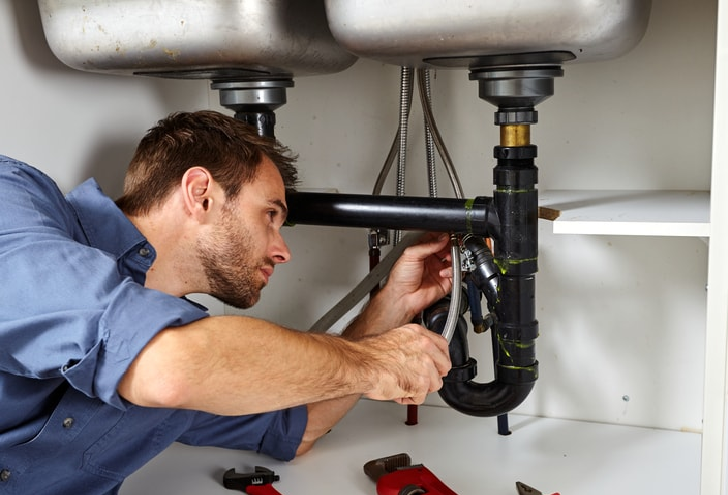When designing a new home, incorporating energy-efficient technologies is key to reducing long-term operational costs and enhancing comfort. Mini split air conditioning systems and heat pumps are excellent options for achieving high energy efficiency, especially when combined with financial incentives such as the upcoming HEEHRA rebates.
Mini Split Systems: Customizable and Efficient Cooling and Heating
Mini split systems are versatile air conditioning units that allow for both heating and cooling without the need for extensive ductwork. This makes them ideal for new home designs that emphasize architectural freedom and energy efficiency. Mini splits consist of an outdoor compressor unit and one or more indoor air handling units, allowing for zoned temperature control throughout the house. This zoned approach not only provides precise temperature control in different areas but also reduces energy wastage, as only occupied spaces can be heated or cooled as needed.
Heat Pumps: A Sustainable Choice
Heat pumps are another cornerstone of modern, energy-efficient home design. Unlike traditional heating systems that generate heat, heat pumps transfer heat from the outside air (even in cold weather) into the home. During warmer months, the process reverses, acting much like an air conditioner by removing heat from the house. This ability to both heat and cool homes makes heat pumps incredibly versatile and efficient. By using electricity to move heat rather than generate it, heat pumps can provide equivalent space conditioning at as little as one quarter of the cost of operating conventional heating or cooling appliances.
Cost Savings with HEEHRA Rebates
The introduction of HEEHRA rebates provides a significant incentive for homeowners considering mini split systems and heat pumps. These rebates are designed to offset the initial purchase and installation costs, making these efficient systems more accessible to a wider range of homeowners. Understanding the availability and application process for these rebates is crucial for anyone in the design phase of building a new home. For those wondering, “when will HEEHRA rebates be available?” it’s important to stay updated through reliable resources as these incentives can significantly impact budgeting and design decisions.
Integrating Systems into Home Design
When integrating mini split systems and heat pumps into a home’s design, strategic placement of both indoor and outdoor units is essential. Indoor units should be strategically placed to maximize air distribution and cooling or heating efficiency. This often means installing them in central locations or in rooms where temperature regulation is most needed. Conversely, outdoor units must be positioned in areas with good air circulation to function effectively, away from obstructions like trees or walls and elevated above flood levels.
Further considerations include minimizing the length of refrigerant lines to ensure efficiency and reduce potential energy losses. Thought should also be given to aesthetic factors; for instance, units should be placed where they are least visible to maintain the home’s curb appeal.
Integrating smart thermostats and advanced control systems can significantly enhance the functionality and efficiency of these HVAC systems. Smart thermostats allow homeowners to adjust settings remotely, optimizing energy use based on real-time needs and external weather conditions. These controls can also learn the homeowner’s preferences and adjust the settings automatically to maintain comfort while reducing unnecessary energy consumption.
Furthermore, for homes with varying occupancy in different rooms or areas, zoning capabilities of mini split systems can be maximized. By dividing the home into zones, each area can be heated or cooled based on its use, preventing energy waste in unoccupied spaces. This zoning not only improves overall energy efficiency but also enhances the personal comfort levels of each occupant.
Overall, the successful integration of these systems into home design not only depends on technical placement but also on incorporating them into the home’s smart technology ecosystem, ensuring they complement the modern, connected home environment.
Long-term Benefits
Beyond immediate cost savings from HEEHRA rebate incentives, incorporating mini split systems and heat pumps into a home design brings several long-term benefits. These include lower utility bills due to higher energy efficiency, reduced carbon footprint, and increased property value. Energy-efficient homes not only cost less to run but also have a lower impact on the environment and can be more attractive to future buyers interested in sustainable living.
The design of a new home presents a unique opportunity to invest in technologies that will provide economic and environmental benefits for years to come. Mini split air conditioning systems and heat pumps represent the forefront of energy-efficient home heating and cooling. Coupled with financial incentives like HEEHRA rebates, these systems are both a smart and sustainable choice for any new homeowner. As the trend towards greener, more energy-efficient homes continues to grow, integrating these technologies into home designs will become increasingly commonplace, driving forward innovations in home comfort and energy management.


